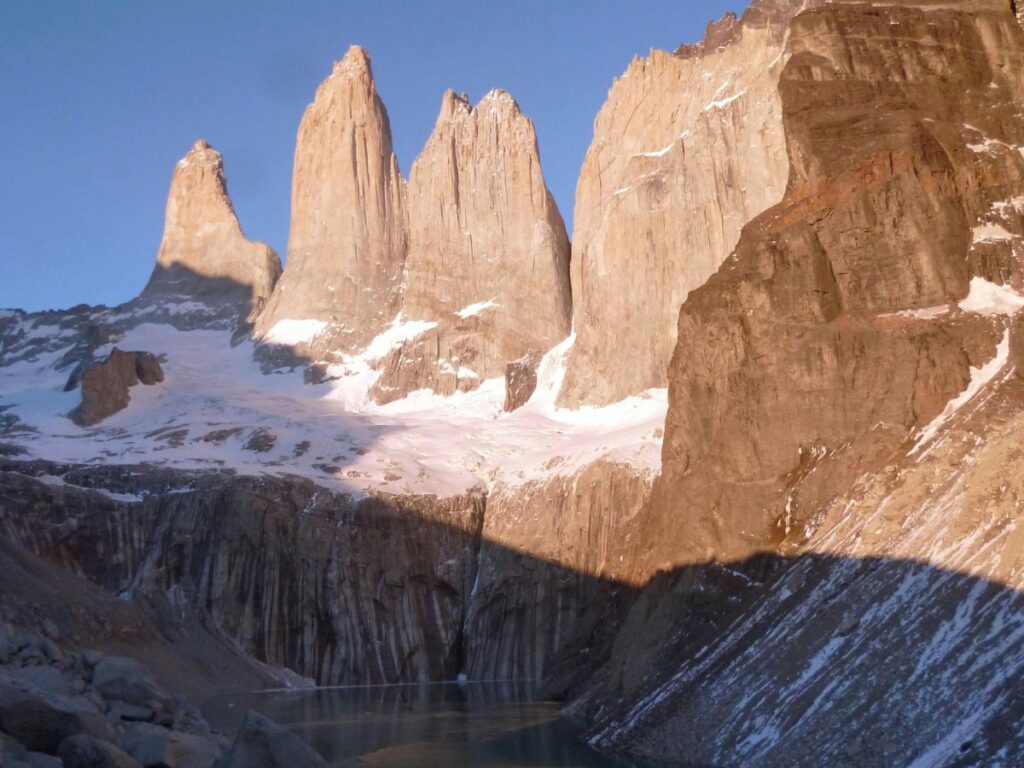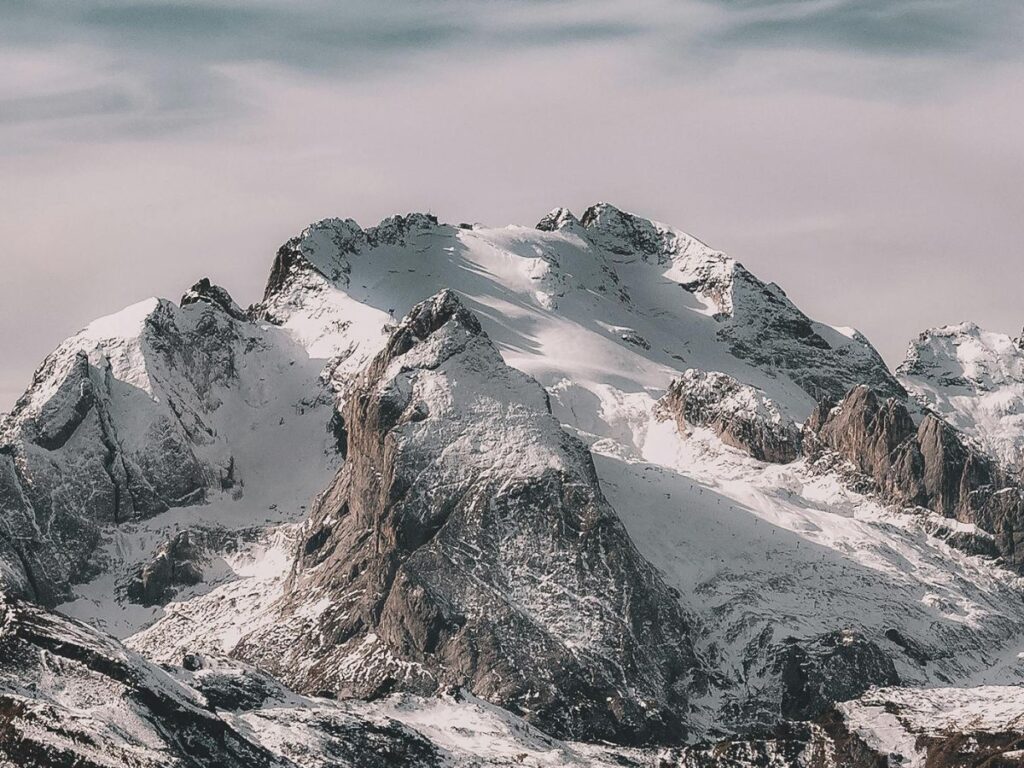Nestled within the majestic Sierra Nevada Mountains, Yosemite National Park is a jewel of natural beauty, famed for its towering cliffs, lush valleys, and breathtaking waterfalls. But beyond these well-trodden wonders lies a hidden treasure not to be overlooked—the glaciers in Yosemite National Park. These icy giants, though dwindling, paint a picture of nature’s power and perseverance, offering a unique glimpse into the past and a critical insight into our climate’s future. As you plan your expedition to explore the best glaciers in Yosemite, prepare to be awed by the silent majesty of these frozen landscapes. Whether you’re an avid hiker, a nature enthusiast, or simply someone seeking the tranquility of the great outdoors, the glaciers in Yosemite promise an adventure like no other. Let’s embark on a journey to uncover the secrets of Yosemite’s glaciers, where each step tells a story of millennia and each view takes your breath away.
The Glaciers of Yosemite: An Overview
Glaciers, the majestic rivers of ice, play a pivotal role in shaping the landscapes of mountainous regions, and Yosemite National Park is no exception. These slow-moving giants form over centuries as layers of snow compact and crystallize under their own weight, creating vast reserves of ice that carve and sculpt the earth beneath them. In Yosemite, glaciers have been instrumental in molding the iconic granite landmarks that define the park’s skyline, demonstrating the glaciers’ integral role in the park’s ecosystem. They are not only a source of awe-inspiring natural beauty but also vital water reservoirs that feed the park’s rivers and waterfalls, especially during the spring melt.
Historically, the glaciers in Yosemite National Park have been a subject of fascination and study. The park was home to significantly larger glaciers thousands of years ago during the last ice age, their immense power evident in the deep valleys, polished domes, and sharp ridges that characterize Yosemite’s landscape today. The most notable remnants of these ancient ice masses are the Lyell and Maclure Glaciers, named after notable geologists and serving as key indicators of the park’s glacial history and ongoing environmental changes.
The current state of glaciers in Yosemite, however, reflects a broader global trend of glacial retreat due to climate change. Both the Lyell and Maclure Glaciers have significantly reduced in size over recent decades, mirroring the challenges faced by glaciers worldwide. This reduction not only affects the park’s natural water systems but also serves as a critical indicator of the changing climate’s impact on our natural heritage. Despite their diminishing size, the glaciers in Yosemite National Park remain a crucial subject of scientific research and conservation efforts, offering invaluable insights into the past and future of our planet’s climate.
As we explore the glaciers in Yosemite, we are reminded of the enduring power of nature and the importance of preserving these natural wonders. Whether you’re gazing at the vistas from Glacier Point or trekking to the remaining ice fields, the glaciers in Yosemite invite you to contemplate the forces that have shaped this magnificent landscape over millennia.

The Best Glaciers in Yosemite National Park
Yosemite National Park, a marvel of nature’s grandeur, is home to some of the most stunning and significant glaciers in the Sierra Nevada. Among them, the Lyell and Maclure Glaciers stand out not just for their beauty, but for their fascinating histories and contributions to our understanding of glacial movements and climate change. Here’s a closer look at these icy giants.
Lyell Glacier
Location and How to Get There: The Lyell Glacier, once the largest glacier in Yosemite National Park, is nestled near the peak of Mount Lyell, the highest point in the park. To reach it, adventurers embark on a challenging hike from the Tuolumne Meadows area, requiring a significant level of fitness and mountaineering skills.
Named after the eminent geologist Charles Lyell, this glacier has been a focal point for studies on glacial movements and their effects on the landscape. Its history is deeply intertwined with the geological story of the Sierra Nevada, offering insights into the processes that shaped this iconic region. Reflecting the global trend of glacial retreat, the Lyell Glacier has significantly diminished in size over the past century. This retreat serves as a poignant indicator of climate change’s impact on the Sierra Nevada’s fragile alpine environments.
What to Expect and Unique Features: Visitors who make the arduous journey to the Lyell Glacier are rewarded with breathtaking views of the surrounding peaks and an up-close look at one of Yosemite’s remaining glaciers. Though smaller than in years past, the glacier’s presence continues to influence the local ecosystem, and its stark beauty is a powerful reminder of nature’s impermanence.
Maclure Glacier
Location and How to Get There: Situated near the summit of Mount Maclure, the Maclure Glacier is accessible via a strenuous hike from the Tuolumne Meadows, similar to the approach for Lyell Glacier. The trek demands good physical condition and proper preparation.
Named after William Maclure, a geologist known for his early American geological surveys, the Maclure Glacier has played a critical role in the scientific study of Yosemite’s glacial history. It offers a unique window into the dynamics of Sierra Nevada’s glaciation. Like the Lyell Glacier, Maclure Glacier has experienced noticeable retreat. Despite this, it remains a significant feature of the park’s landscape, contributing to the biodiversity and water systems of the area.
What to Expect and Unique Features: Those visiting the Maclure Glacier can expect a rugged and awe-inspiring landscape, with the glacier itself a testament to the natural forces at work in the high Sierra. The area around the glacier is known for its stark, rugged beauty, and the journey offers exceptional views and a deep connection to the wild aspects of Yosemite National Park.
Exploring the best glaciers in Yosemite, such as the Lyell and Maclure Glaciers, is a journey into the heart of the wilderness, offering a glimpse into the past and a stark illustration of the present-day challenges facing our planet’s glaciers. As we witness these glaciers in Yosemite National Park, we are reminded of the importance of conservation efforts and the need to mitigate climate change’s impacts on these iconic natural wonders.
Hiking to Glacier Point
Glacier Point offers one of the most breathtaking vantage points in Yosemite National Park, commanding an unparalleled view of the park’s vast wilderness, including its renowned glaciers. Standing at Glacier Point, visitors are treated to a panoramic spectacle that includes Half Dome, Yosemite Valley, and the High Sierra, with the distant contours of the remaining glaciers in Yosemite National Park visible on clear days. This spot is not just a feast for the eyes but a pilgrimage site for those who seek to connect deeply with nature’s majesty.
Glacier Point and Its Views
Glacier Point is an iconic overlook that provides visitors with a bird’s eye view of Yosemite’s natural wonders, including the famed Yosemite Valley and several of Yosemite’s glaciers. The point offers a direct view of Half Dome and allows for a unique perspective on the geology and glacial history that has shaped the landscape. It’s a testament to the enduring allure of Yosemite’s natural beauty and the glaciers that have played a significant role in carving out this spectacular scenery.
Hiking Routes, Difficulty, and Length
There are several routes to reach Glacier Point, catering to a range of hiking abilities and preferences:
The Four Mile Trail: Starting from Yosemite Valley, this strenuous hike covers approximately 4.8 miles one way and ascends about 3,200 feet. It offers magnificent views throughout the climb, culminating in the unparalleled vistas from Glacier Point. The trail is demanding, with a steep incline that requires good physical condition.
The Panorama Trail: For a longer and equally rewarding experience, the Panorama Trail is about 8.5 miles one way from Glacier Point to Yosemite Valley. It offers diverse views of the park, including Illilouette Fall, Half Dome, and of course, the glaciers in Yosemite National Park. This trail is considered strenuous due to its length and elevation changes.
Glacier Point Road: For those who prefer a less strenuous option, driving to Glacier Point and exploring the short trails around the point is an alternative when the road is open, typically from late spring through fall.
Tips for Making the Most of Your Visit to Glacier Point
Start Early: To avoid the crowds and enjoy the serenity of Glacier Point, it’s best to start your hike early in the morning. This also provides the advantage of cooler temperatures during the ascent.
Stay Hydrated: Bring plenty of water, especially if you’re hiking the Four Mile Trail or the Panorama Trail, as the effort and exposure to the sun can lead to dehydration.
Wear Appropriate Footwear: The trails can be rocky and uneven, so wearing sturdy hiking boots is essential for comfort and safety.
Bring a Camera: The views from Glacier Point are among the most photogenic in Yosemite National Park. Capture the breathtaking landscapes and the distant glaciers to keep the memories of your visit alive.
Practice Leave No Trace: To help preserve the beauty of Glacier Point and Yosemite’s glaciers for future generations, follow Leave No Trace principles by packing out all trash, staying on designated trails, and respecting wildlife.
A visit to Glacier Point is a highlight of any trip to Yosemite National Park, offering unforgettable views of the park’s most iconic features, including a glimpse of the majestic glaciers that have shaped this landscape over millennia. Whether you hike up or drive, the experience of standing atop Glacier Point and gazing out over Yosemite’s vast wilderness is an awe-inspiring reminder of the natural world’s grandeur.

Exploring Yosemite’s Glaciers: What You Need to Know
Embarking on an adventure to explore the glaciers in Yosemite National Park is an unforgettable experience, offering a unique glimpse into nature’s power and beauty. To ensure a rewarding and safe journey, it’s crucial to be well-prepared and mindful of the best practices for visiting these icy wonders.
Best Time of Year to Visit Glaciers in Yosemite: The optimal time for visiting glaciers in Yosemite is late spring through early fall. During this period, the weather is most favorable, with reduced snow levels making the glaciers more accessible. Summer months offer clearer trails and warmer temperatures, making it easier to hike to higher elevations where the glaciers are located. However, be mindful of late-summer conditions, as glaciers can be more difficult to distinguish from the surrounding snowfields.
Required Gear and Preparation Tips
Proper preparation is key to a successful glacier visit. Here’s what you’ll need:
Hiking Boots: Sturdy, waterproof boots are essential for navigating rocky and potentially slippery terrain.
Layered Clothing: Weather in the high Sierra can change rapidly, so wear layers to adjust to varying temperatures.
Navigation Tools: A map, compass, or GPS device will help keep you on track in remote areas.
Sun Protection: High elevation means stronger UV rays, so bring sunscreen, sunglasses, and a hat.
Hydration and Nutrition: Carry enough water and high-energy snacks to sustain your energy levels throughout the hike.
Safety Considerations and Environmental Impact
Safety is paramount when exploring glaciers. Be aware of your surroundings, especially near crevasses and steep slopes. Avoid walking on glaciers without proper equipment and knowledge, as they can be dangerous. Minimizing your environmental impact is also crucial. Stay on designated trails to protect fragile habitats, and carry out all waste to keep the park pristine for future generations. By practicing Leave No Trace principles, you contribute to the preservation of Yosemite’s natural beauty.
Preservation Efforts and the Future of Yosemite’s Glaciers
The glaciers in Yosemite National Park, like many worldwide, are retreating due to climate change. This not only affects the park’s ecosystem but also serves as a vivid reminder of our impact on the environment.
Climate change has led to rising temperatures and changing precipitation patterns, accelerating the retreat of Yosemite’s glaciers. This not only alters the landscape but also affects water supply, wildlife habitats, and the natural beauty that attracts visitors from around the world. Efforts to preserve Yosemite’s glaciers include research, monitoring climate change’s effects, and implementing strategies to reduce environmental impact. Visitors can contribute by reducing their carbon footprint, supporting conservation organizations, and advocating for policies that protect our natural resources.
The future of glaciers in Yosemite National Park is uncertain, with predictions indicating further retreat. However, through concerted conservation efforts and global action against climate change, there is hope for mitigating these effects. Educating visitors about the importance of glaciers and the impact of climate change plays a crucial role in fostering a culture of preservation and respect for these natural wonders.
Exploring the glaciers in Yosemite offers a profound connection to the natural world, reminding us of the beauty worth preserving and the urgent need to act in the face of climate change. By visiting responsibly and contributing to conservation efforts, we can help ensure that Yosemite’s glaciers continue to inspire awe and wonder for generations to come.

Key Takeaways
- Yosemite National Park is home to some of the most stunning glaciers in the Sierra Nevada, including the well-known Lyell and Maclure Glaciers, which offer unique insights into the park’s glacial history and the broader impacts of climate change.
- The best time to visit the glaciers in Yosemite is from late spring through early fall, when the weather conditions are most favorable for hiking and exploring the higher elevations where the glaciers are located.
- Proper preparation and safety precautions are essential for anyone planning to explore Yosemite’s glaciers. This includes wearing appropriate gear, staying hydrated, and being mindful of the environment to minimize your impact.
- Glacier Point provides one of the most breathtaking views in the park, with accessible hiking routes for varying levels of difficulty. Visitors are encouraged to make the most of their visit by starting early, being prepared for changing weather, and practicing Leave No Trace principles.
- The glaciers in Yosemite are facing significant threats from climate change, with observable retreats that underscore the urgency of environmental conservation efforts. Visitors can contribute to these efforts through mindful practices and supporting preservation initiatives.
- Education and awareness about the impact of climate change on glaciers are crucial. The article aims to inform readers about the importance of glaciers to Yosemite’s ecosystem and the need for concerted conservation efforts to protect these natural wonders for future generations.
- Engagement in preservation efforts and responsible tourism practices can help mitigate the impact of climate change on Yosemite’s glaciers. By visiting responsibly, advocating for environmental policies, and reducing personal carbon footprints, visitors can play a part in safeguarding Yosemite’s majestic glaciers.
FAQs
- When is the best time to visit glaciers in Yosemite?
Late spring through early fall is the optimal time for glacier visits. - How difficult is the hike to Glacier Point?
The Four Mile Trail to Glacier Point is strenuous, with a steep incline. - Can I see glaciers from Glacier Point?
Yes, Glacier Point offers views of Yosemite’s high country where glaciers are located. - Is Glacier Point accessible by car?
Yes, Glacier Point Road allows car access when it’s open, typically from late spring through fall. - Can beginners hike to Yosemite’s glaciers?
The hikes can be challenging; beginners should assess their fitness level and consider shorter routes. - How are the glaciers in Yosemite monitored for changes?
Scientists use various methods, including satellite imagery and on-the-ground measurements. - How has the size of Yosemite’s glaciers changed over time?
Yosemite’s glaciers have significantly diminished in size over the past century due to climate change.
